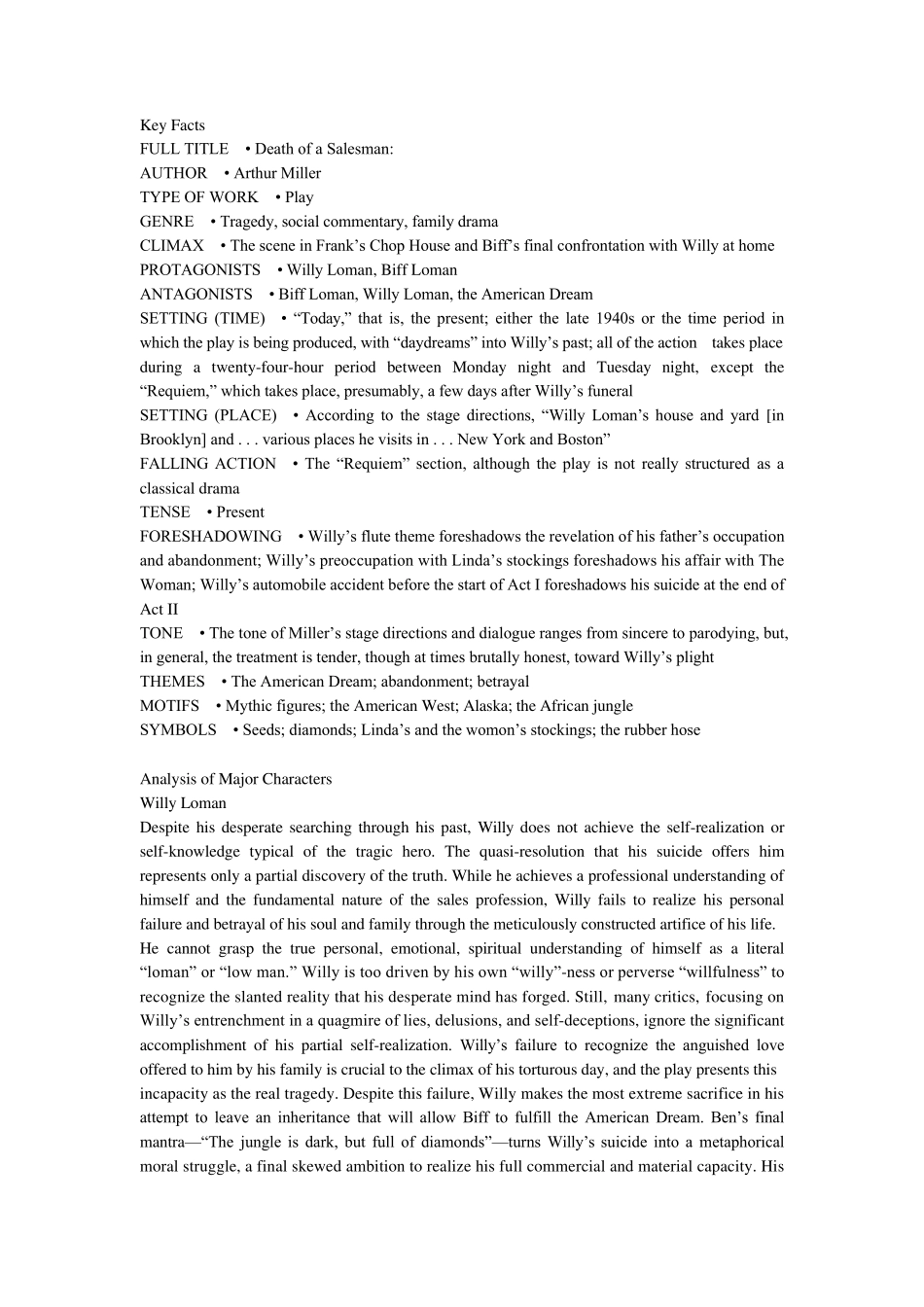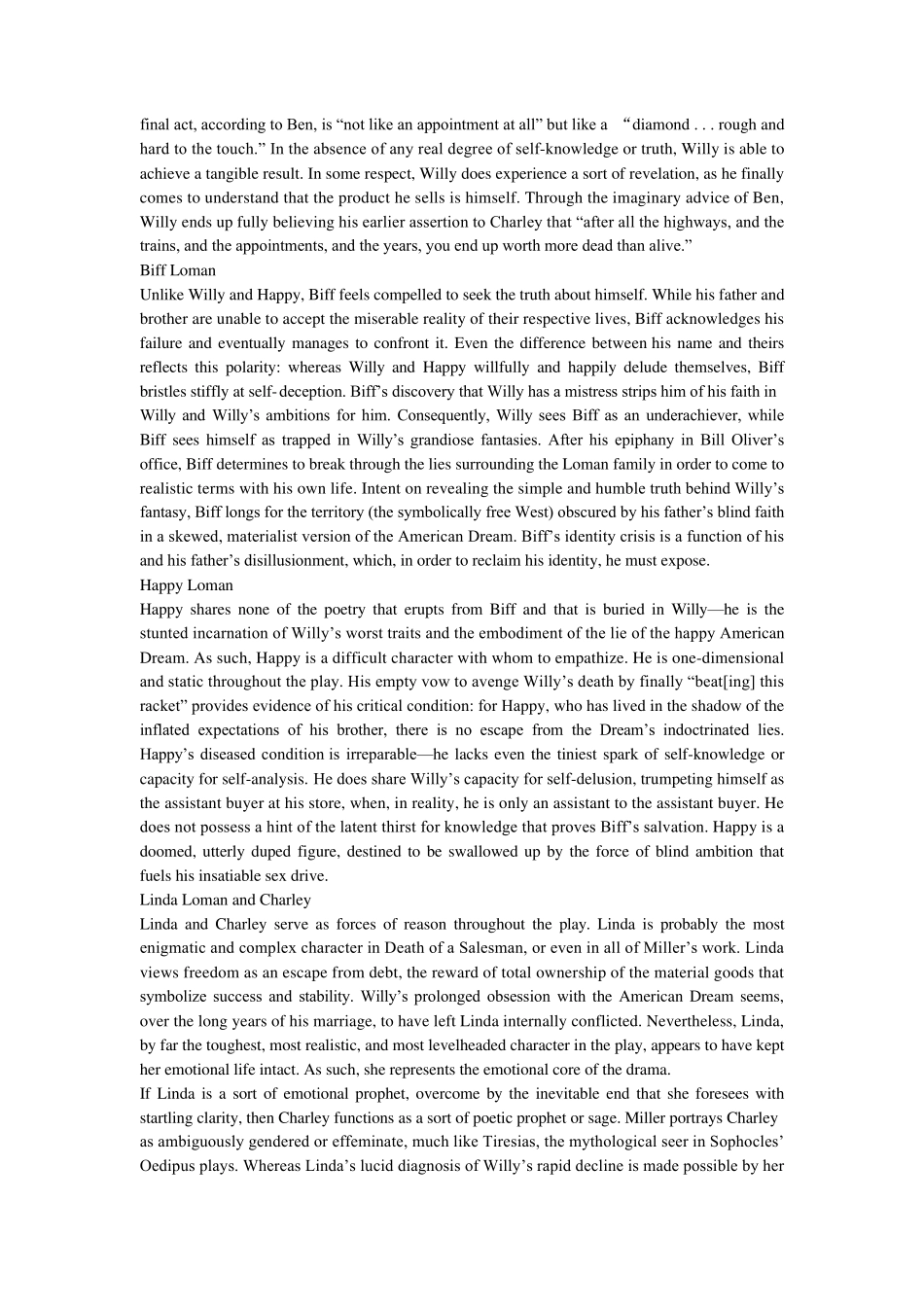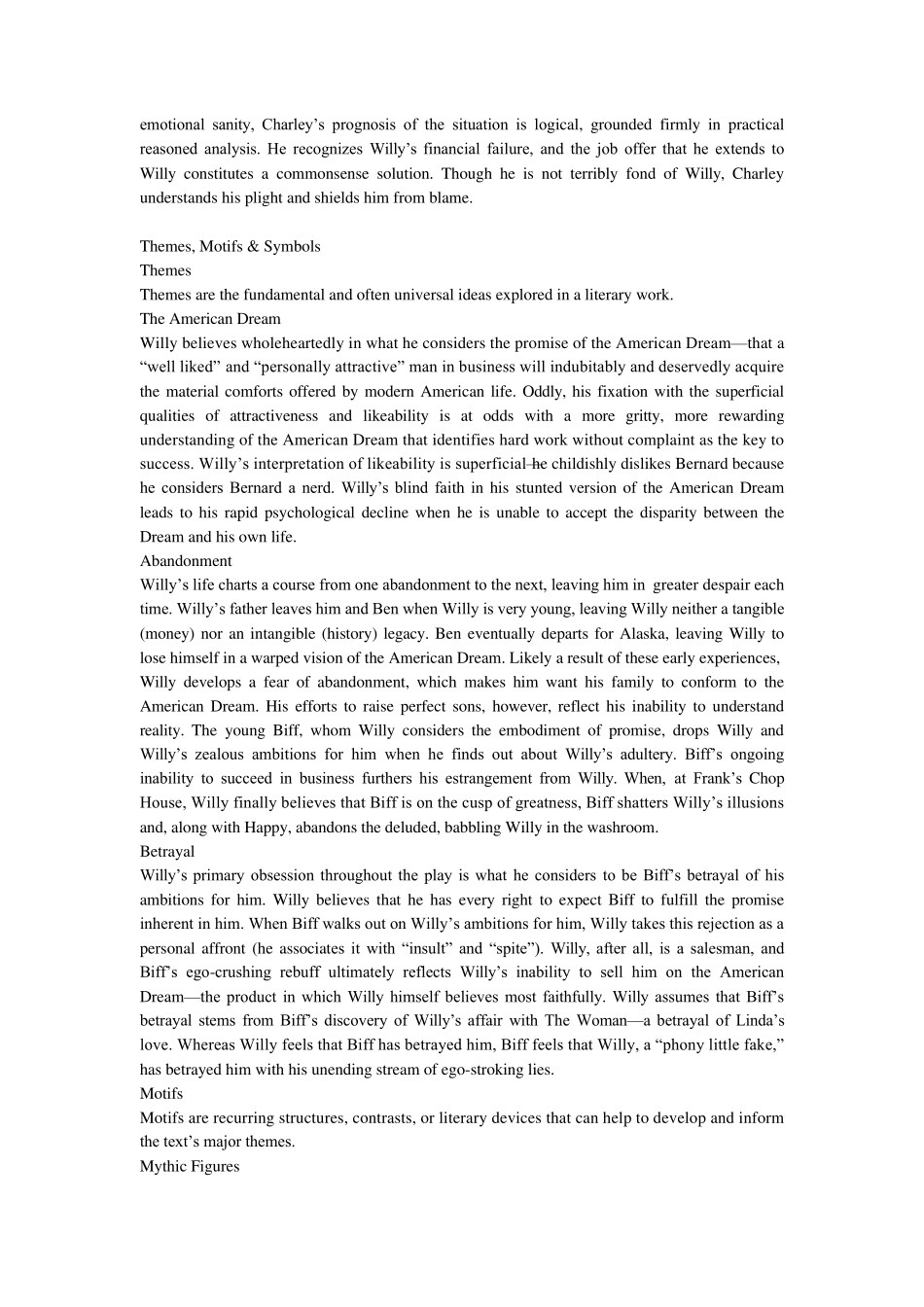Key Facts FULL TITLE • Death of a Salesman: AUTHOR • Arthur Miller TYPE OF WORK • Play GENRE • Tragedy, social commentary, family drama CLIMAX • The scene in Frank’s Chop House and Biff’s final confrontation with Willy at home PROTAGONISTS • Willy Loman, Biff Loman ANTAGONISTS • Biff Loman, Willy Loman, the American Dream SETTING (TIME) • “Today,” that is, the present; either the late 1940s or the time period in which the play is being produced, with “daydreams” into Willy’s past; all of the action takes place during a twenty-four-hour period between Monday night and Tuesday night, except the “Requiem,” which takes place, presumably, a few days after Willy’s funeral SETTING (PLACE) • According to the stage directions, “Willy Loman’s house and yard [in Brooklyn] and . . . various places he visits in . . . New York and Boston” FALLING ACTION • The “Requiem” section, although the play is not really structured as a classical drama TENSE • Present FORESHADOWING • Willy’s flute theme foreshadows the revelation of his father’s occupation and abandonment; Willy’s preoccupation with Linda’s stockings foreshadows his affair with The Woman; Willy’s automobile accident before the start of Act I foreshadows his suicide at the end of Act II TONE • The tone of Miller’s stage directions and dialogue ranges from sincere to parodying, but, in general, the treatment is tender, though at times brutally honest, toward Willy’s plight THEMES • The American Dream; abandonment; betrayal MOTIFS • Mythic figures; the American West; Alaska; the African jungle SYMBOLS • Seeds; diamonds; Linda’s and the womon’s stockings; the rubber hose Analysis of Major Characters Willy Loman Despite...


